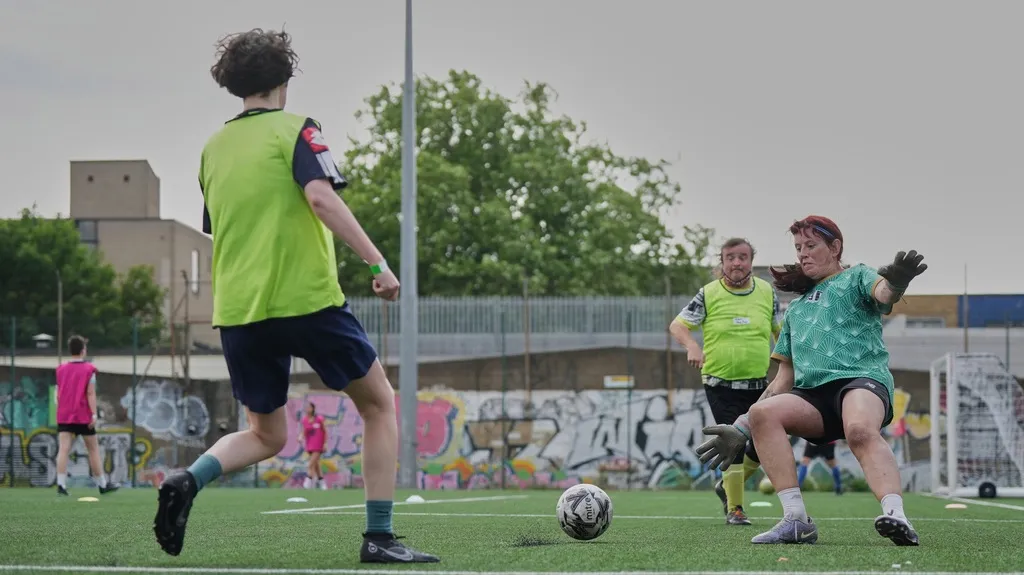December 4, 2020
World Rugby's Ban on Trans Players Has Nothing to Do With 'Fairness'
READ TIME: 4 MIN.
Michele K. Donnelly, Brock University and Bruce Kidd, University of Toronto
The attack on gender-diverse women in sports has gained prominent support by the recent decision from World Rugby to ban transgender women from international women's competition.
The ban perpetuates the harmful gender policing that has plagued women's sport for more than a century. By limiting trans women's participation in elite level rugby, World Rugby is sending the inaccurate and discriminatory message that trans women do not belong in women's rugby – and that trans women are not women.
Academics around the world have condemned World Rugby's decision. National bodies like USA Rugby and Rugby Canada have said they would ignore the ban in domestic competitions.
Other respected sports bodies, like the Canadian Centre for Ethics in Sport and Canadian Women and Sport, have promoted policies that are more inclusive for trans athletes.
Justifying the ban
World Rugby says the ban is necessary for fairness. It claims, based on its own working group's findings, that there is a 20 to 30 per cent greater risk of injury when a female player is tackled by someone who has gone through male puberty. Socially conservative columnists and others with little genuine interest in women's sport quickly piled on, raging that the ban is necessary to protect "biological female athletes" from "natal males."
While fairness is essential to sport at every level, the World Rugby ban constitutes another sorry example of the weaponization of "fairness" as a way to preserve sports for those already privileged to enjoy them.
In the 19th century, Indigenous athletes were barred from amateur sport in Canada on the racist grounds that as "noble savages" they had unfair natural advantages. In the mid-20th century, outstanding female athletes from the Soviet Union were ridiculed on the bogus claims that they were really men in disguise.
In recent years, similar attacks have been made against intersex women from the Global South whose appearance or body chemistry do not conform with the preferred "feminine" white European body type. World Athletics has successfully barred Caster Semanya, the South African double Olympic champion, from her preferred track events (400m, 800m, 1500m) on the grounds that she possesses too much natural testosterone.
Human rights ignored by international sport
While trans athletes are protected by human rights legislation in countries like Canada, appeals to human rights hold little sway in international sport. As the United Nations High Commissioner for Human Rights recently documented, international sports bodies claim "the autonomy of sport" to stand outside the international regime of human rights.
The problem with World Rugby's approach to fairness is that it uses one arbitrary marker (male puberty) as the focus of fairness – ignoring the many other factors (very different genetic pools, class, cultural and political backgrounds, economies and environmental conditions) that advantage some athletes over others and some teams and countries over others.
While women athletes around the world fight for greater resources, compensation and recognition relative to the men in their sports, international governing bodies focus on creating new categories of exclusion in women's sport.
Trans women are women. Inclusion requires that all women be fully welcomed at every level of sports. Against those who fear that their inclusion will end the historic division of sports into male and female categories – thereby destroying the gains that women have made in sports in recent years – we point out that trans women live their lives as women and are passionately supportive of women's sport. This means sharing the unequal and unfair conditions in which women participate in sport globally.
Does the fact that some trans women may have gone through male puberty give them an automatic advantage? There is no clear evidence this is the case.
While there is a significant difference between the best performances by men as a group and women as a group in the measurable sports, those averages do not mean that every male competitor enjoys such advantage. The ranges of men's and women's abilities and performances overlap tremendously and are influenced by social and cultural factors in addition to physical characteristics.
Defining what's 'unfair'
When a trans or gender-diverse woman is successful, those who label her participation as "unfair" neglect to mention that there are cisgender athletes with superior height, speed and strength, as well as cisgender athletes who have benefited from better resources, training and more opportunities to participate.
World Rugby relies on prejudices and anecdotes to determine who meets the definition of "woman" for the purposes of participation in elite level rugby – not rigorous, scientific study.
It is instructive that one of World Rugby's defenders, the U.K.-based Fair Play for Women – whose very name weaponizes the idea of fairness – acknowledges there is no scientific evidence to back its claims. Nonetheless, it calls for continued discrimination, saying that "rules shouldn't be changed without evidence." It exemplifies how distorted concerns about fairness are used to justify exclusion.
One of the themes of the Tokyo 2020 Olympics is "Diversity and Inclusion": "Celebrating the differences of individuals (and) accepting and respecting people regardless of age, ethnicity, nationality, gender, sexual orientation, religious beliefs or intellectual or physical impairment."
The world of sport has a long way to go to achieve full inclusivity. But ending the discrimination and attacks against trans women in women's sport – especially those attacks dressed up in the name of "fairness" – would be a big step in the right direction.![]()
Michele K. Donnelly, Assistant professor, Department of Sport Management, Brock University and Bruce Kidd, Professor of Kinesiology, University of Toronto
This article is republished from The Conversation under a Creative Commons license. Read the original article.






